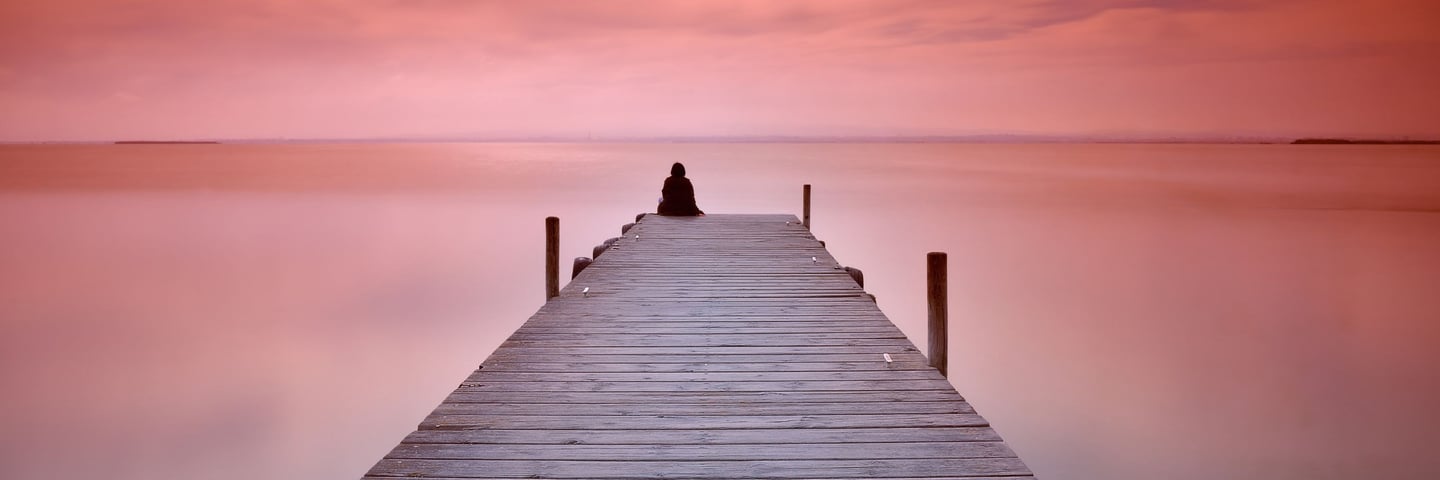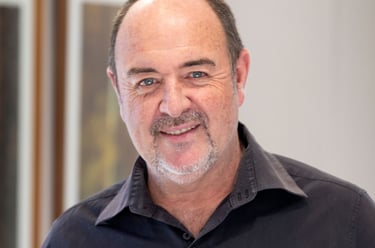Breaking Free from the Lonely Art of Art
Discover why creativity thrives in the community and how to escape the isolation that keeps many artists stuck. From famous photographer partnerships to practical ways to find your creative tribe, learn how sharing your artistic journey can transform both your work and your creative fulfilment.
ART PHOTOGRAPHY
Martin Osner
6 min read
"Art is not a solitary pursuit, even when it's done alone."
— Madeleine L'Engle
There's a particular kind of silence that settles over a creative workspace at 2 AM. The kind where your latest piece stares back at you, and you find yourself wondering if anyone will ever truly see it—or understand what you were trying to say.
If you've ever felt this way, you're not alone in feeling alone.
The paradox of creative work is that whilst it often begins in solitude, it withers without connection. We retreat to our studios, our darkrooms, our quiet corners with laptops, believing that true art must emerge from isolation. Yet somewhere in that process, many of us lose sight of why we create in the first place: to connect, to communicate, to share something meaningful with the world.
The Modern Creative's Dilemma
In our hyper-connected digital age, we're more isolated than ever. We scroll through endless feeds of other people's work, double-tapping our way through Instagram galleries and watching YouTube tutorials in silence. We're spectators in a world where we should be participants.
"The painter has the Universe in his mind and hands," Leonardo da Vinci once said. But what good is holding the universe if you're holding it alone?
This digital consumption has created a strange breed of creative loneliness. We're surrounded by inspiration yet starved of genuine artistic connection. We see the polished final products but miss the messy, vulnerable process that creates them. We know what everyone else is making, but we've forgotten how to share our journey.
Why Creativity Craves Community
"I have not failed. I've just found 10,000 ways that won't work," Thomas Edison famously said. Imagine if he'd discovered those 10,000 ways in complete isolation, with no one to share the frustration, the breakthroughs, or the eventual triumph.
Creativity doesn't just benefit from community—it needs it to survive and thrive. Here's why:
Ideas multiply when they're shared. That half-formed concept rattling around in your head becomes clearer when you try to explain it to someone else. The feedback loop of communication often reveals possibilities you never saw on your own.
Courage grows in numbers. Annie Leibovitz once said, "A thing that you see in my pictures is that I was not afraid to fall in love with these people." That fearlessness she speaks of? It's easier to find when you're surrounded by others who understand the vulnerability of putting your work into the world.
Skills sharpen through observation and exchange. Ansel Adams and Edward Weston's friendship wasn't just personal—it was professionally transformative. They pushed each other's technical boundaries and artistic vision through years of shared experiences and honest critique.
Perspective widens beyond our limitations. "Photography is a way of feeling, of touching, of loving. What you have caught on film is captured forever," Aaron Siskind observed. But what you capture is inevitably limited by your viewpoint. Community expands that frame of reference.
The Accountability Factor
Let's be honest about something else: showing up is easier when someone else expects you to.
Street photographer Vivian Maier spent decades capturing extraordinary images that remained unseen until after her death. Whilst her story is compelling, it also raises questions about what might have been different if she'd had a community of fellow photographers encouraging her to share her work during her lifetime.
"The best thing about a picture is that it never changes, even when the people in it do," Andy Warhol noted. But pictures that are never seen by others remain frozen in more ways than one—they can't impact, inspire, or evolve through the response they generate.
When we commit to sharing our process with others—whether it's posting work-in-progress shots, attending critiques, or simply meeting regularly with fellow creatives—we create a gentle accountability that keeps us moving forward.
What Real Creative Community Looks Like
Community doesn't mean you need to join a formal art collective or attend every gallery opening in town. A real creative community can be surprisingly intimate and straightforward.
It's two photographers talking technique over coffee. Henri Cartier-Bresson and Robert Capa's friendship began with shared drinks and turned into a lifelong exchange of ideas that shaped modern photojournalism.
It's an online group where you share your experiments without fear of judgement. Think of how the Magnum Photos collective began—a small group of photographers who wanted to maintain control over their work and support each other's vision.
It's the local workshop where everyone's trying something new together. "I never have taken a picture I've intended. They're always better or worse," Diane Arbus once said. Imagine exploring that unpredictability alongside others who understand the beautiful frustration that comes with it.
It's the friend who asks to see what you're working on—and looks. Sally Mann spoke about how, "At twelve, I was determined to shoot only For Art's Sake. I was relieved from the need to please anyone but myself, and it was a wonderful moment for me." However, even Mann has spoken about the importance of having viewers who understand the deeper intentions of her work.
Finding Your People
The beautiful thing about a creative community is that it finds you as much as you see it. When you start sharing your process—not just your polished results—something magical happens. Others who are on similar journeys begin to appear.
One of the most rewarding aspects of our work at the Art Photography Academy has been watching artists connect through our Inspire Community. It's remarkable to see photographers share their experimental work, offer encouragement to others trying new techniques, and build genuine friendships around their shared passion for creative growth. The community challenges create natural conversation starters and give everyone a reason to step outside their comfort zones together.
Similarly, the small group dynamics in our Getting Started course demonstrate the power of learning alongside one another. There's something special about progressing through creative challenges with others who are at similar stages in their journey—the shared victories and struggles create bonds that extend far beyond the coursework.
Start small. Share one work-in-progress photo. Join one local art group or online community. Reach out to one artist whose work resonates with you. Comment thoughtfully on work that moves you. Show up consistently, even when (especially when) you don't feel like your work is ready.
"Photography is about finding out what can happen in the frame. When you put four edges around some facts, you change those facts," Garry Winogrand observed. A community works similarly—it puts a frame around your creative practice that changes everything within it.
The Ripple Effect of Shared Creativity
There's an African proverb that captures this perfectly: "If you want to go fast, go alone. If you want to go far, go together."
When we create in isolation, we might achieve technical proficiency quickly. But when we build and create in a community, we discover possibilities we never imagined. We find courage we didn't know we had. We develop resilience through shared struggles and celebrated breakthroughs.
"The photographer's most important and likewise most difficult task is not learning to manage his camera, but learning to see photographically," Edward Weston wrote. Learning to see photographically—or to see artistically in any medium—happens faster and more completely when we're seeing alongside others.
Your Next Step
Your creativity is not meant to live in isolation. It's intended to be witnessed, shared, challenged, and celebrated. The lonely art of art is simply art that hasn't yet found its community.
This is precisely why the Art Photography Academy exists—it was founded on the belief that community is at the heart of all meaningful creative work. We've built a space where you can connect with fellow photographic artists through messages, video chats, and our monthly creative challenges that bring everyone together around shared themes and techniques.
Photography and art cannot—and should not—be practised in isolation. It's unfair to others who could benefit from seeing your unique perspective, and it's unfair to you as well. When you create alone, you rob yourself of the inspiration, growth, and joy that is nurtured from connecting with others on similar journeys. You deserve more than lonely, uninspired work created in a vacuum.
So here's your gentle invitation: find your people. Or let them see and find you.
Start a conversation about technique with another artist. Share something you're working on, even if it feels unfinished. Ask someone whose work you admire about their process. Join our community, where engagement and inspiration are the daily norm. Show up consistently, generously, and authentically.
It's all about making an effort, engaging and staying inspired!
"I believe there are things nobody would see if I didn't photograph them," Diane Arbus said. The same is true for your creative voice—there are things nobody will see, feel, or understand if you don't share them.
The lonely art of art doesn't have to stay lonely. Your creative spark is waiting to meet others. And somewhere out there, other sparks are waiting to meet yours.
Well, that's a lot that's being said—enough for today.
Stay Creative...Why? Because it's just good for your soul.
Best wishes,
Martin


EXPLORE OSNER ART GALLERIES
© 2025. Martin Osner Fine Art Photography, Photoschool & Art Academy | All rights reserved.
ART ACADEMY
ASK A QUESTION


